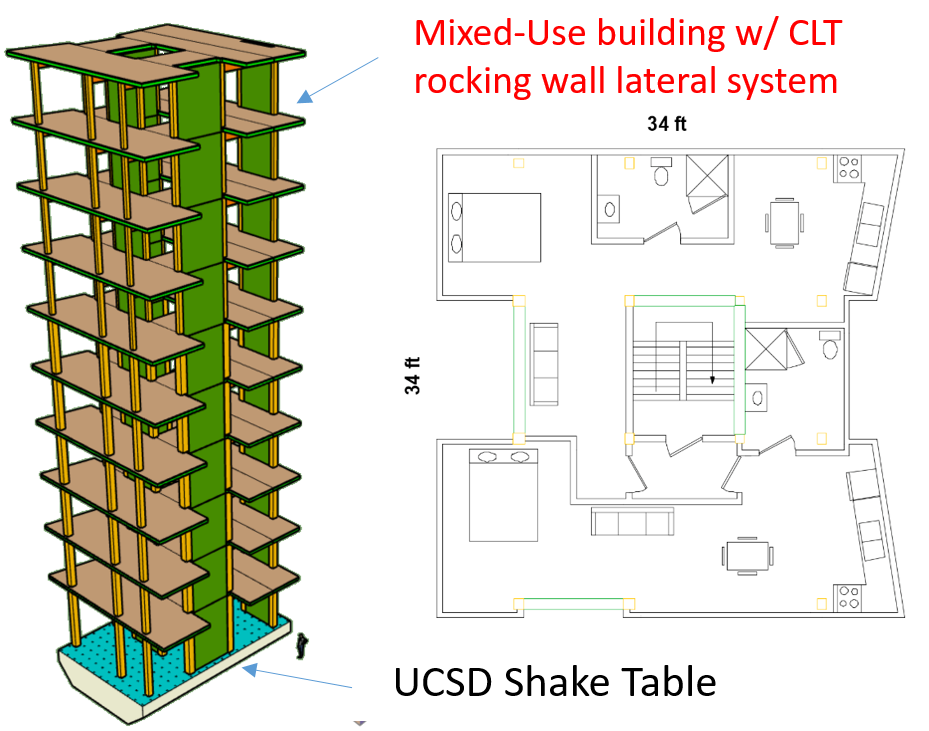
Task 8 Plan
The specimen (see below) designed in Task 7 to achieve the resilience targets will be constructed and tested on the NHERI@UCSD’s outdoor shake table through collaboration with industry. The construction and testing are scheduled after March 2021. Based on the existing experience with the speed of CLT construction, the structural frame of the building can be completed within 2 months, and 1 additional month will be needed for installation of needed non-structural components. The building will be subjected to different level of earthquake excitations, including DBE, MCE, and near-fault ground motions.

There will be three main types of data generated from the testing program: automatically collected sensor data, manually collected damage inspection and repair time data, and video capturing data. Automatic sensor data includes displacement, acceleration, force, and deformation time series at instrumented building components. In order to quantify the actual down time of the building, the man-hours needed for inspection and repair will be recorded. These data will provide clear quantitative indications on whether the predetermined design resilience targets (Task 7) have been achieved, i.e. validating RBSD.
The test program will also serve as an ideal vehicle for payload opportunities. Being the first tall CLT structure striving to achieve a resilient design and tested at full scale, there are many innovations and new products that can be generated outside the project scope by industry and international researchers. Contact the project team if there is payload test interest.
Progress
Revit Model of the 10-story building gravity design can be downloaded here: Download
The Planned 2021 Full-Scale Test


